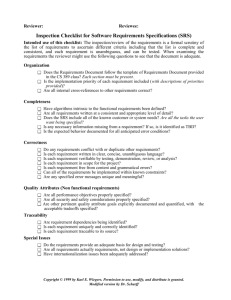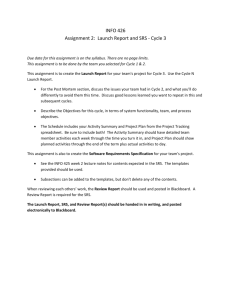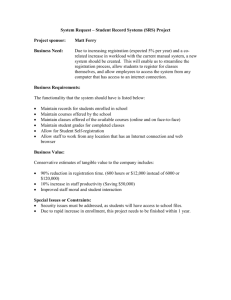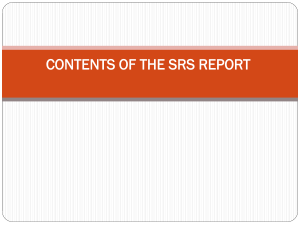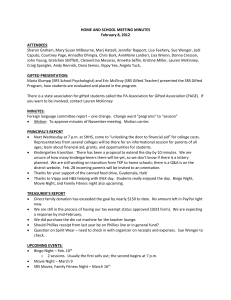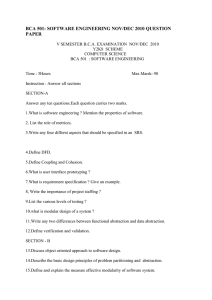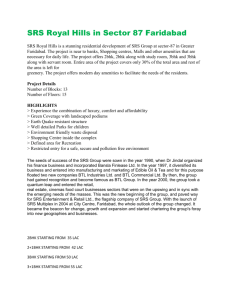Writing Quality Requirements
advertisement
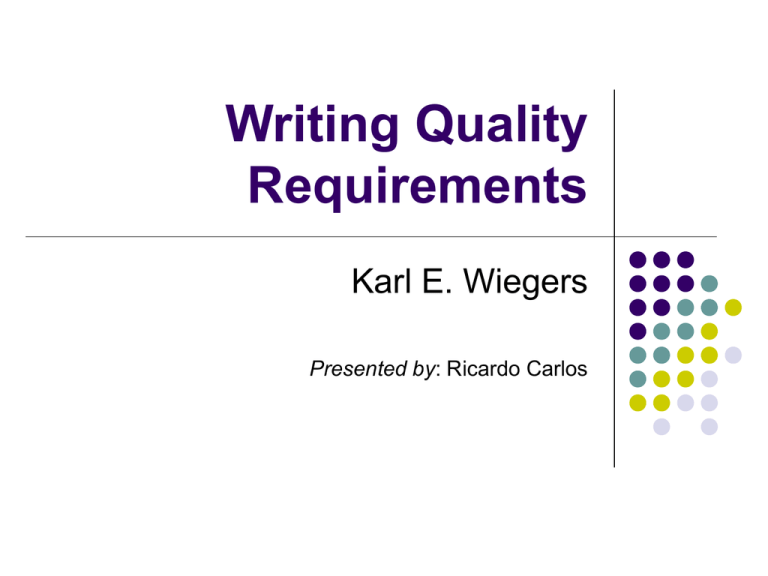
Writing Quality Requirements Karl E. Wiegers Presented by: Ricardo Carlos The Problem Many Software Requirements Specifications (SRS) filled with badly written requirements Poor requirements cannot lead to excellent software Few software developers educated about writing quality requirements Not many examples of good requirements available to learn from Few projects have good ones to share Few companies willing to place their product specifications in public domain No formulaic way to write good requirements – largely a matter of experience More expensive to fix defective requirements in later stage of development or when customer calls Quality Requirement Characteristics Correct Feasible Necessary Prioritized Unambiguous Verifiable Correct Requirement Accurately describes functionality to be delivered Reference for correctness – source of requirement Actual customer Higher-level system requirements specification Need user representatives to determine correctness of user requirements Inspection of requirements Prevent developers from “guessing” Feasible Requirement Implement within known capabilities and limitations of system environment Developer should work with requirements analysts or marketing personnel throughout elicitation Provides reality check on technical feasibility of requirement What can and cannot be done What can be done only at excessive cost What can be done only with other tradeoffs Example: “The product shall switch between displaying and hiding non-printing characters instantaneously.” Not feasible – computers cannot do anything instantaneously Necessary Requirement Something customer really needs Something required for conformance to external requirement, external interface, or standard Should be traceable back to its source Source should be someone authorized to specify requirements Untraceable requirements may not really be necessary Prioritized Requirement Assigns implementation priority for particular product release Value provided to customer Relative cost of implementation Relative technical risk associated with implementation Assigned by customers or their surrogates Gives project manager more control New requirements added during development Budget cuts Schedule overruns Team member departure Requirement priority levels example High priority – must be in next product release Medium priority – necessary, but can be deferred to later release Low priority – nice to have, but may be dropped if insufficient time or resources Unambiguous Requirement Reader should be able to draw only one interpretation Multiple readers should arrive at same interpretation Should be void of subjective words (easy, simple, rapid, efficient, etc.) Should be written in simple, straightforward language of user domain Reveal ambiguity Formal inspections of requirements specification Write test cases from requirements Create user scenarios showing expected behavior Example: “The HTML Parser shall produce an HTML markup error report which allows quick resolution of errors when used by HTML novices.” Ambiguous – the word “quick” Verifiable Requirement Determine if requirement properly implemented in product Devise tests Use inspection or demonstration Needs to be consistent, feasible, and unambiguous to be verifiable Quality SRS Characteristics Complete Consistent Modifiable Traceable Complete SRS No requirements or necessary information should be missing Hard to spot missing requirements Ways to achieve completeness Use case method – focus on user tasks rather than system functions during elicitation Graphical analysis models – represent different views of requirements Flagging missing requirements information TBD (“to be determined”) – resolved before product development Example: “The product shall provide status messages at regular intervals not less than every 60 seconds.” Incomplete – what are the status messages? how are they supposed to be displayed to the user? Consistent SRS Different requirements should not conflict Disagreements among requirements must be resolved before development can proceed Ensure requirements modification does not introduce inconsistencies Modifiable SRS Should be easy to revise Maintain history of changes to each requirement Uniquely label each requirement Group related requirements together Create table of contents, index, and crossreference listing Traceable SRS Link each requirement to its source Link each requirement to its development Higher-level system requirement Use case Voice-of-the-customer statement Design elements Source code Test cases Uniquely label each requirement Express each requirement in a structured, finegrained way Quality Requirements Guidelines Keep sentences and paragraphs short Use active voice Use proper grammar, spelling, and punctuation Use terms consistently and define in glossary or data dictionary Read requirements from developer’s perspective (to check if well-defined) Use right level of granularity Avoid long narrative paragraphs containing multiple requirements Write individually testable requirements Use consistent level of detail throughout document Avoid stating requirements redundantly Makes maintenance of document easier Less vulnerable to inconsistencies

